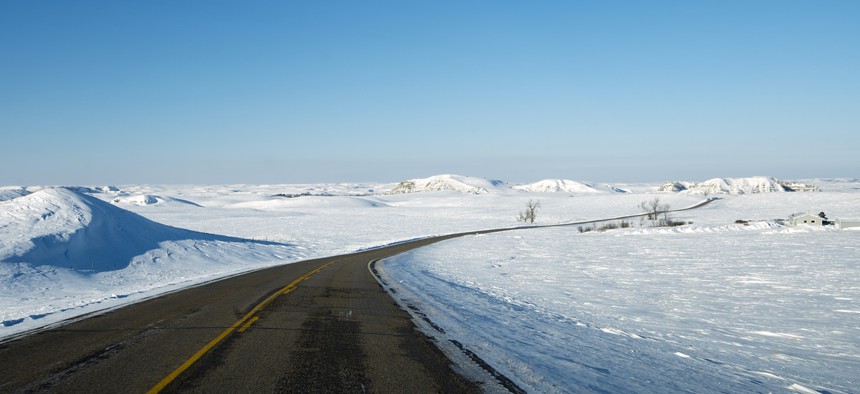Study: The Best—and Worst—State Highway Systems

A highway near Bismarck, North Dakota. Shutterstock
North Dakota maintained its first-place ranking in the 25th Annual Highway Report, which uses 13 categories to evaluate the condition and cost-effectiveness of state-run highways.
North Dakota, Missouri and Kansas have the best state-owned highway systems in the country, while New Jersey, Alaska, Delaware and Massachusetts have the worst, according to rankings released Thursday.
The Annual Highway Report, compiled for 25 years by the libertarian think tank Reason Foundation, evaluates the condition and cost-effectiveness of state-controlled highways in 13 categories, including traffic congestion, pavement condition, road fatality rates and spending (capital, maintenance, administrative, and overall) per mile. This year’s report incorporates state highway data from 2018, along with congestion and bridge condition data from 2019.
North Dakota maintained its first-place ranking from last year, thanks to high rankings in traffic congestion (third in the nation, with commuters spending roughly 5.4 hours per year in traffic), total spending per mile (fourth), and pavement condition (fifth for both urban and rural interstates).
New Jersey, in last place, also kept its ranking from the previous year, with dismal scores in total spending per mile (50th), urban interstate pavement condition (45th), traffic congestion (40th) and structurally deficient bridges (29th).
At first glance, researchers acknowledged, those rankings may seem unfair, given the population and geographic differences between the top and bottom states. But “a more careful review suggests that numerous factors, including terrain, climate, truck traffic volumes, urbanization and congestion...all significantly impact state highway performance,” Baruch Feigenbaum, the foundation’s managing director of transportation policy and the report’s lead author, said in a statement.
For example, he said, states that manage the largest highway systems in the country—North Carolina, Texas and Virginia—are all ranked in the top 21 in this year’s report, while states with the smaller systems—Hawaii, Rhode Island and New Jersey—are in the bottom 10.
“Prioritizing maintenance, targeting and fixing problem areas, and reducing bottlenecks are among the successful strategies states can use to improve their quality and efficiency,” Feigenbaum said.
Nationwide, commuters spent slightly more than 33 hours per year in traffic in urban areas in 2019, though “the congestion problem is primarily concentrated in the major cities of just a few states,” the report said. In 31 states, for example, commuters spent less than 35 hours in peak-hour congestion, while drivers in the three lowest-ranked states for traffic delays—Delaware, Illinois and Massachusetts—sat in traffic for more than 100 hours last year.
In general, the quality and safety of highways across the country improved “incrementally” as “spending on state-owned roads increased by 9%, up to $151.8 billion” since 2016, the most recent previously available data. But pavement condition worsened slightly overall, the report said, noting that more than a quarter of urban interstate mileage in poor condition is confined to just three states: California, New York and Wyoming.
Kate Elizabeth Queram is a staff correspondent for Route Fifty and is based in Washington, D.C.
NEXT STORY: EPA Sets National Recycling Goal at 50% by 2030





